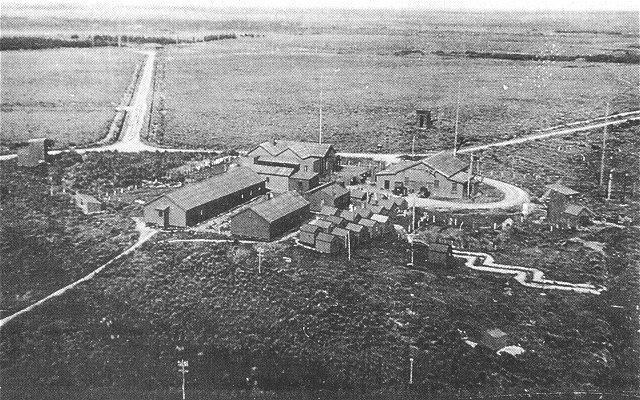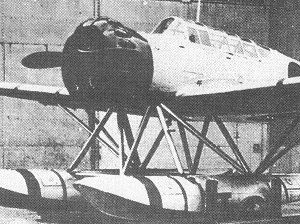AWARUA RADIO (ZLB) Sequel.
by Frank Barlow ZL2NBSINCE the articles about Awarua Radio's wartime activities were published in the June and July 1992 issues of Break-In, things have changed significantly in that Awarua Radio has now closed for good. This concludes the chapter on the three similar high-powered low frequency coastal radio stations that were built by the German Telefunken Company just prior to World War I: one at Awarua near Bluff; one at Awanui near Kaitaia; and one in German Samoa (now Western Samoa). There has been some feedback about the articles, and some interesting contacts have been made.
Ray ZL2BMD has put me right on the TEAL flying boats crossing the Tasman at that time-they were Short "Empire" class aircraft, not "Solents" as I had incorrectly recorded. He also cleared up the mystery of the missing flying boat ZKAMB which had been ordered but never came to New Zealand, as it had been diverted to service in the United Kingdom, retaining its original New Zealand callsign.
George ZL2THQ advised that Telecom would be opening a museum in the old Herd Street Post Office building in Wellington, and that the HFDF set DFG 24/2 which was in use at Awarua Radio during the war would be on display. Sadly, the museum did not eventuate as the building has been sold for demolition and the contents dispersed elsewhere into storage.
John ZL1AYZ came to light with recently released information on the interception, copying, and code-breaking of Japanese signals by the Australians, notably the RAAF. This developed into a major effort and gave an insight into their previously embargoed set-up.
Ron Brazier, a member of the New Zealand Aviation Historical Society has produced some photographs, which give an excellent representation of the type of enemy submarines and aircraft that operated around the New Zealand coast World War II.
Lew ZL2IC, formerly a fellow operator on the same HFDF watch as myself at Awarua Radio, came forward with clippings and information on the Japanese submarine activity around the New Zealand coast.
Sorting through all this new information, a clear picture now emerges of Japanese submarine and aerial reconnaissance around New Zealand, and it is these activities that will be recorded. During World War II, New Zealand was fortunate that the seemingly irresistible southward advance of the Japanese Imperial Forces was stopped at the naval battle of the Coral Sea in May 1942. Nevertheless, Japanese submarines launched a reconnaissance plane over Wellington and Auckland looking for naval targets. Fortunately for us they found nothing worthy of their attention. The New Zealand Radio Direction Finding Network, along with other Pacific-wide D/F Stations were responsible for monitoring enemy radio frequencies, and it is interesting to follow the progress of these vessels, from the New Zealand perspective.

Figure 1. A wartime (1942) photograph of Awarua Radio (ZLB) showing the transmitting building, the living and domestic quarters, and the Army guards encampment. The road to the left leads to the recently built Receiving Office in the distance, and the road to the right leads to the HF DF stations, an even further distance. Clearly visible are the three massive concrete anchors for the 400' mast of the original Telefunken spark transmitter. As can be seen the ground is flat and swampy in parts.
The large I class submarine (I-25) carrying a small float-plane, made a reconnaissance patrol of the Australian East Coast harbours in February 1942, and then crossed the Tasman to New Zealand. It came through Cook Strait under a full moon, on the surface, because it found that the underwater current was greater than the submerged speed of the vessel. Fast and manoeuvrable on the surface with powerful diesel engines, these craft were much slower and less agile under water. On the night of March 9, from the sheltered waters of Palliser Bay, it launched its "Glen" floatplane which flew over Wellington Harbour without sighting any worthwhile targets. (Looking out now to the Harbour entrance and Baring Head, it is hard to imagine that 50 years ago an enemy submarine with evil intent was lurking behind the headland in Palliser Bay.) The I-25 having recovered its plane, moved up to the Bay of Plenty where it repeated the reconnaissance over Auckland Harbour on the night of March 13. Again, no targets were sighted. The 1-25 then travelled to Fiji and reconnoitred Suva harbour before returning to its base in Truk, in the Caroline Islands. The submarine evidently maintained strict radio silence throughout the voyage, as there is no record of any signals being intercepted.

Figure 2. Japanese WW 11 submarine 1-26, sister vessel to the aircraft-carrying 1-21 and 1-25 which flew their planes over Auckland and Wellington in March and May 1942. These vessels were large, long-range patrol submarines of 2500 to 3000 tonnes, powered by 12,000 hp diesels and capable of 23 knots on the surface. However, they were slow to dive, and sluggish underwater with a speed of around eight knots. They carried a crew of 100.
At the beginning of May 1942, two I class submarines carrying floatplanes left their base in Truk: the I-21 to check out Noumea, Suva and Auckland, and the I-29 to keep watch on Sydney Harbour. The 1-21 looked at Noumea and then Suva where its plane had spotted some naval vessels. The submarine then headed for Auckland and, en route, it sent a radio message to its base reporting on the shipping in Suva Harbour. This message was copied by Allied listening posts and passed on to the Fleet Radio Unit in Melbourne (FRUMEL), where the Americans, who had succeeded in breaking the Japanese Naval code, were able to decypher it. The FRUMEL unit was formed from the US Navy Radio section at Corrigidor in the Philippines, which had been evacuated to Melbourne. Later, on May 26, a "fix" was obtained by the New Zealand D/F stations on a Japanese vessel (presumably the 1-2 1) about 550 miles northwest of Auckland. The Japanese used RSN/ as the callsign for their submarines, with the Katikana character known as "N Bar" being formulated as "dah, dit, dah, dah, dah".


